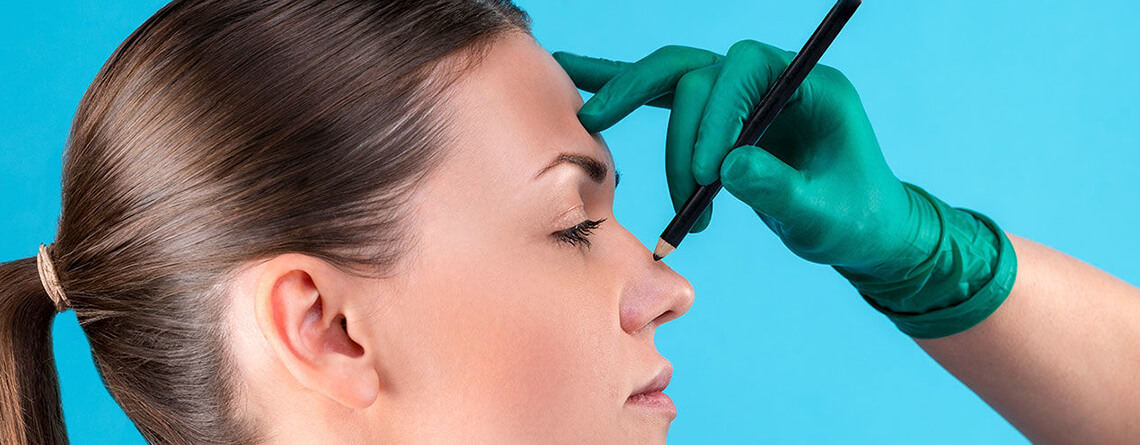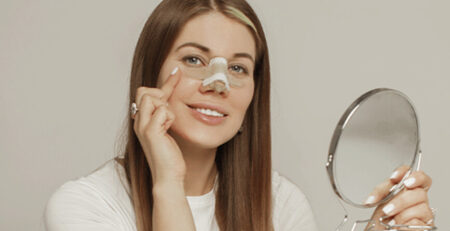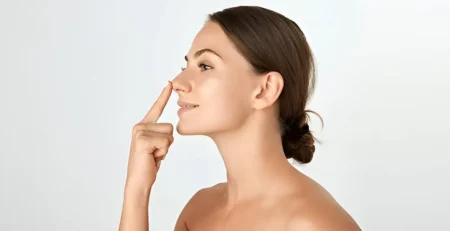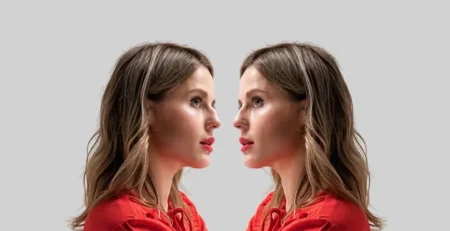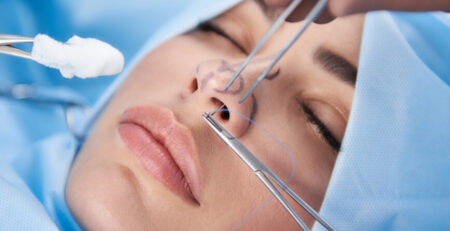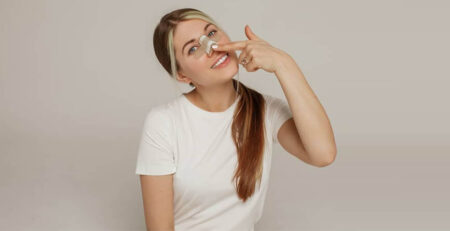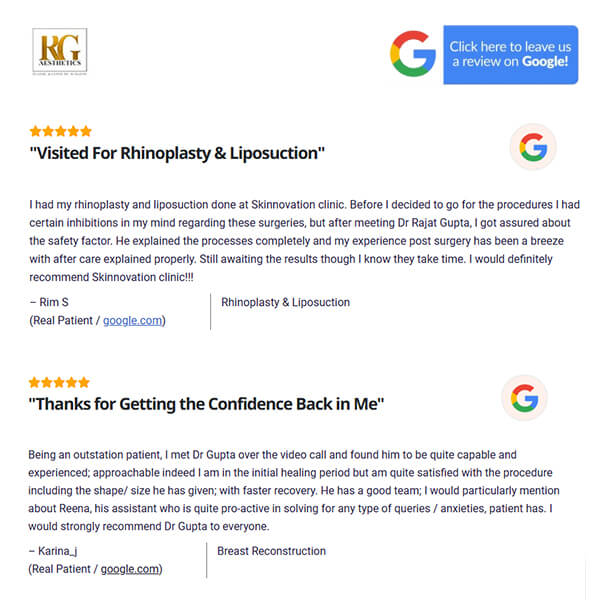Nose Job or Rhinoplasty Made Easier to Understand!
When you look at yourself in the mirror, one of the first things you notice is probably your nose. Most people’s eyes go straight to the centrepiece of their face. The longer they scrutinise their appearance, the more they may notice what is wrong. When your nose starts feeling wrong, it becomes impossible to shake the feeling. You start noticing it every time you look in the mirror, and each time it seems worse than the last.
This problem has plagued humankind since our beginning. Since well before the common era (or A.D.) began.
This means that the solution, too, has existed nearly as long: rhinoplasty. Commonly known as the nose job, rhinoplasty helps patients all over the world with various problems. These may be aesthetic or otherwise. Some of the earliest recorded cases of rhinoplasty happened right here in India, back in the 6th century BCE. Even then, rhinoplasty was used for both cosmetic and reconstructive purposes.
Therefore, it is evident that nose jobs have been around since time immemorial. They are a staple of plastic surgery – on both the cosmetic as well as the reconstructive side. This may beg the question: why are they so popular? Why have they persisted throughout history? Why are there always enough and more people craving different noses?
Why People Opt for Nose Jobs
As we previously established, a nose job is performed both for cosmetic and reconstructive purposes. So let us understand each point of view in turn.
Cosmetic Reasons for Rhinoplasty
Your nose, eyes and lips are the centrepieces of your face. They come together to define your identity and determine how people remember you. You may have heard people comment on “strong noses” or “firm mouths”. Why? Because these noses and mouths have an impact. They stay in the memory.
Now, most people want their best selves to be remembered. But what happens when your best self does not exist? If you have ever watched the hit sitcom F.R.I.E.N.D.S., you may have heard of the character, Rachel Green. Rachel had a very long and pointed nose for most of her young life. Then she got a nose job. It is evident that this is one of the best decisions she made. Although she was still considered to be the prettiest girl in her school pre-nose job, she was much happier with her new nose.
This is a huge reason a lot of people go for nose jobs. It just makes them feel better about themselves. It is not for someone else but entirely so that they can look in the mirror and feel good. A lot of actors and models also realise that their face is a huge part of their job. Therefore, they get a nose job done if they feel dissatisfied. They feel it boosts their chance of getting jobs. Most of the time, they are right about this assumption, and they quickly make up the money they spent.
Therefore, aesthetics is a preeminent reason for rhinoplasty. With an excellent surgeon who has a steady hand and who understands the intricacies of the procedure, they are also guaranteed the nose of their dreams. However, that said, in some cases, there may be a medical need for a rhinoplasty.

Have questions or want to get started? We are ready to help you with a smile!
Reconstructive Reasons for Rhinoplasty
Nasal deformities are a pervasive and unfortunate reality. Some are born with them; others get them. You can deform your nose by merely falling over and not having the reflexes to stop your fall. Your nose may hit the ground and break, distorting it.
There are primarily five ways of deforming your nose of having a nasal deformity. These include:
- Congenital Deformities: These are deformities from birth and include cleft palate, nasal mass or weakness in the structure of the nose.
- Deviated Septum: The septum is the wall of cartilage between your nasal passages. Sometimes, it is malformed or bent to the side. This can be congenital or caused by trauma. Either way, it often causes a host of breathing problems.
- Saddle Nose: A saddle nose is a nose which, as the name suggests, is shaped like a saddle. This means it dips down or has a concave bridge. This is often caused due to trauma or illnesses. It is also easily fixed through rhinoplasty.
- Hooked Nose: As you age, your nose also gets affected. This process can cause drooping that leads to obstruction, as the sides of the nose collapse inward. This lack of support may also cause the nose to droop forward and look hooked.
- Dorsal Hump: The final and one of the most common nose deformities is the dorsal hump. This is when you have a hump on your nose. Typically caused by trauma, this hump affects the appearance of your nose from every angle. Rhinoplasty removes this hump and smooths out your nose.
Each of these deformities is effectively tackled through a nose job. It rectifies every problem smoothly, making it seem like the problem never existed.
Are there any cons to a nose job?
So far, all we have discussed are the pros. With good reason, too – there are a significant number of advantages. But what about the possible cons?
Well, we consider all the cons to be temporary for what is essentially an almost-permanent solution. The disadvantages include light bleeding, and you not being able to go out socially for a little while after your surgery. This is due to the plaster on your nose. There may also be some discomfort, although that is easily managed.
Most of the cons are surgery cons which hold true for any procedure. Whenever you opt for a surgical procedure, you have to be ready to face everything that comes. This is why we do not think the cons outweigh the pros. You need to treat your rhinoplasty like any other procedure: ensure you have a brilliant, board-certified surgeon who knows what they are doing.
How do you choose the right surgeon?
There are several parameters along which you can judge the ideal surgeon for you. We recommend finding out how often and how many times they have performed the procedure you want. Get referrals and testimonials about their work. Treat them like you would any other doctor. If you want the best results, you cannot compromise on quality.
Another important parameter that we recommend is looking at your surgeon’s centre. What kind of equipment do they have? More importantly, do they know how to use it all? Is it the state-of-the-art technology you deserve? Is their technique at the required level of sophistication?
These are just a few of the right questions you need to ask before embarking on your plastic surgery journey. Remember, the results you get need to be as close to what you want. You need a surgeon who understands what you want. Even more than that, you need a surgeon who understands what you need. They need to be honest and tell you if your desired results are not possible. They also need to tell you what is possible.
Never compromise on quality for cost. If you get a bad nose job, that would be much worse. Not to mention, you would need to go through corrective surgery which costs even more money and never gives you the original quality of results. Account for these factors and choose your surgeon.
This way, you guarantee happiness to the most important person: yourself.
Now that you know what to look for in a medical professional let us return to discussing nose jobs.
Rhinoplasty – Understanding Some Technicalities
Before discussing the procedure itself, we need to review some terms often associated with rhinoplasty. We also need to address a fundamental question that a lot of patients have:
How painful is cosmetic nose surgery?
The good news about rhinoplasty is that it is a very painless procedure. The only pain you get is when the anaesthesia is injected into you. When the needle breaks your skin, it causes pain. But the anaesthesia is typically long-lasting which makes a recovery much more comfortable.
You may choose between general and local anaesthesia. Your surgeon decides which one will benefit you the most. With centuries of practice and a lot of development, these are the safest painkillers in surgery. Some patients hear horror stories about anaesthesia incidents. Luckily, these are very few and far apart. As long as you follow the guidelines for choosing the right surgeon, you will be perfectly safe, and your surgery should be completely painless and easy.
Now, another thing you have to understand before discussing the procedure is the difference between a rhinoplasty and a septoplasty.
Rhinoplasty vs Septoplasty
As we established above, one of the primary nasal deformities is the deviated septum. This is when the septum is malformed or moved to one side. This often causes breathing problems, can result in snoring and dry mouth.
A septoplasty fixes a deviated septum. However, it does not touch the shape of the nose. So, say a patient has a deviated septum and a saddle nose. The septoplasty would only fix the septum. They would need a rhinoplasty to fix their saddle nose. Rhinoplasty often incorporates septoplasty for this reason. Together, the procedure is referred to as rhinoseptoplasty. It serves cosmetic and reconstructive or medical purposes at the same time.
The Piezotome
Finally, we need to discuss a crucial development in rhinoplasty today. That is the use of ultrasonic technology in reshaping bones. This is achieved through an instrument called the Piezotome.
Ultrasonic technology was first used in nose jobs in 2004. Since then, it has become a staple and produces far superior results. This is because of its focused and precise approach towards rhinoplasty. This instrument offers the surgeon a lot more control. It also causes zero soft tissue damage which speeds up recovery. The Piezotome is used in cases where the bone has been deformed or where the patient wants a difference in their bone structure. It makes the entire procedure much smoother and the results much finer and more aesthetic.

The Anatomy of the Nose
This finally brings us to the anatomy of the nose. We need to understand various parts of the nose before exploring how rhinoplasty affects them.
There are four primary ways the nose may be divided: the bone, which is present at the top near the forehead; the upper cartilage, which comes until the tip; the lower cartilage, which is present at the tip and around the nostrils; and the skin, which covers everything and connects between the nostrils.
There are also different kinds of cartilages. The central cartilage is called the septal cartilage – this gets deviated, forming a deviated septum. Then there are the upper and lower lateral cartilages on either side of the nose. Finally, there are the major and minor alar cartilages, the latter of which make up the base of the nose.
Now that we understand the various terms associated with rhinoseptoplasty let us discuss the procedures.
Rhinoplasty – How it is Done
The surgeon begins by administering general or local anaesthesia, depending on their preference and what they believe will deliver the best results.
After this, they make three incisions: one inside each nostril and one at the base of the nose. With this done, they can lift your skin like a cover, exposing the underlying structure. Then the modifications are done depending on what the patient desires. Absorbable sutures are used to close the incisions, meaning the patient does not need to return to the surgeon to get them removed.
So, how does rhinoplasty help various nasal deformities?
Rhinoplasty for a Wide Nose
Suppose the patient desires a slimmer nose, they break the nasal bones and reshape them. This allows them to come together better. The procedure is called osteotomy and is often used on various bones in the body.
If the patient has a broad nasal base, your surgeon resects or cuts out some of the alar cartilages. Then they are brought together for the modified width.
Rhinoplasty for a Dorsal Hump
Another procedure that involves adjusting the nasal bones is when a person has a dorsal hump. This is when the Piezotome is used. The Piezotome rasps the bone, essentially smoothening the hump by gentle removing it for a straight central line.
Using the Piezotome also ensures that no other tissue is injured and only the bone is affected. Sometimes, the hump has some cartilage in it. In such cases, the surgeon resects this cartilage so that the central alignment is maintained.
Rhinoplasty for a Saddle Nose
In the case of a depressed or saddle nose, the surgeon uses a material called a dorsal craft. This goes on the dorsum, in the depression. A dorsum craft is either created through cartilage taken from the septum or ribs, or an implant is used.
Rhinoplasty for a Sharper Tip
Sharpening the tip means giving the nose definition. A lot of people desire such a pointed nose. They believe it makes a statement, and we agree. Therefore, in such a case, the lower lateral cartilages are sharpened. This makes the tip sharper, making the nose more aesthetic with a much clearer outline.
Rhinoplasty for a Hooked Nose
Using a method called cephalic dissection of the lower lateral cartilages, the tip is rotated upwards. This makes it look much better and removes the droopy look.
Such procedures combine for an overall satisfactory experience. For example, you may get rid of a dorsal hump and make your base narrower for a better final look. Such methods ensure the patient’s maximum happiness – the surgeon’s ultimate goal at the end of the day.
These procedures, as we said earlier, can also be combined with a septoplasty, making a rhinoseptoplasty for the most ideal results.
Septoplasty – How it is Done
A septoplasty is necessary when the septum gets deviated into a C or S shape and, therefore, hinders normal breathing. In a septoplasty, a bit of cartilage is removed from the centre, thus straightening the septum.
Combining these procedures produces the best results. Also, with the introduction of ultrasonic technology, you get superior results with much less trauma. This makes a recovery much more comfortable.
Recovering from Rhinoplasty
The surgery itself is a daycare procedure, which means the patient is fit to resume their daily activities from the next day itself.
After the surgery, a splint or plaster is placed on the patient’s nose. The nasal orifices are covered and packed with paraffin gauze for 24 – 48 hours. The patient is required to wear a patch on their upper lip, which needs changing many times a day. Patients may experience slight bleeding, for which they can use a wet cotton swab, placing it on the nose until the bleeding stops.
After 7-9 days the splint is removed. The bruising and swelling diminishes in the next few days, and the nose gets softer over a few months.
Within 15 days, patients can start practising light sports, although it is recommended to resume heavy exercises only after a month and consulting your surgeon.
This way, nose jobs help people all over the world. The only restriction to getting a nose job is age. Surgeons generally only perform nose jobs on female patients over 15 years old. For males, the age limit is even higher because their noses get fully formed at a later age.
But regardless of when the patient gets a nose job, suffice to say they are thrilled with the results. The self-esteem boost they experience is unprecedented, and they feel much better about themselves.
It is to give such happiness that Dr Rajat Gupta, our board-certified expert plastic surgeon in Delhi, has perfected the nose job. With the state-of-the-art Piezotome machine at his disposal, he specialises in ultrasonic rhinoplasty, ensuring high-quality, striking results for all his patients. We echo his belief in always putting the patient and their needs first so that they get the most captivating and natural-looking results from their nose job in Delhi!
Dr. Rajat Gupta
MBBS, MS, DNB(Gen. Surg.),
DNB (Plastic Surgery)
Dr. Rajat Gupta is a board certified plastic surgeon in India with 10 years of experience to back his expertise in the domain of aesthetic surgeries.
Having completed his training from Maulana Azad Medical College and equipped with a thorough understanding of aesthetic needs of people, Dr. Gupta strives to offer the best remedies and cosmetic procedures outfitted with the latest technology to the aspirants in India and across the globe. To book an appointment, call: +91-9251711711 or email: contact@drrajatgupta.com

